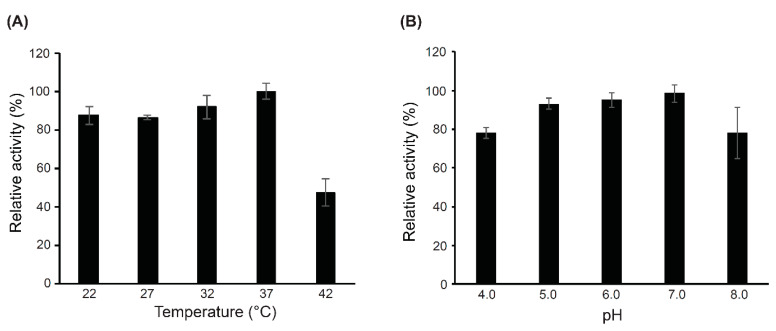Figure 5.
Identifying the optimal temperature and pH for CWH351—656 lytic activity. (A) The effects of temperature on the lytic activity of CWH351—656. The stability was tested by heating the protein at different temperatures (22–42 °C) for 60 min using C. difficile cells. (B) Influence of pH on the bactericidal activity of CWH351—656 incubated with PBS buffer with different pH (4.0–8.0) values. Relative lytic activity was obtained by comparing the lytic activity of each test with the maximal lytic activity among the dataset. Each column represents the mean of duplicate experiments, and error bars indicate the standard deviation.

